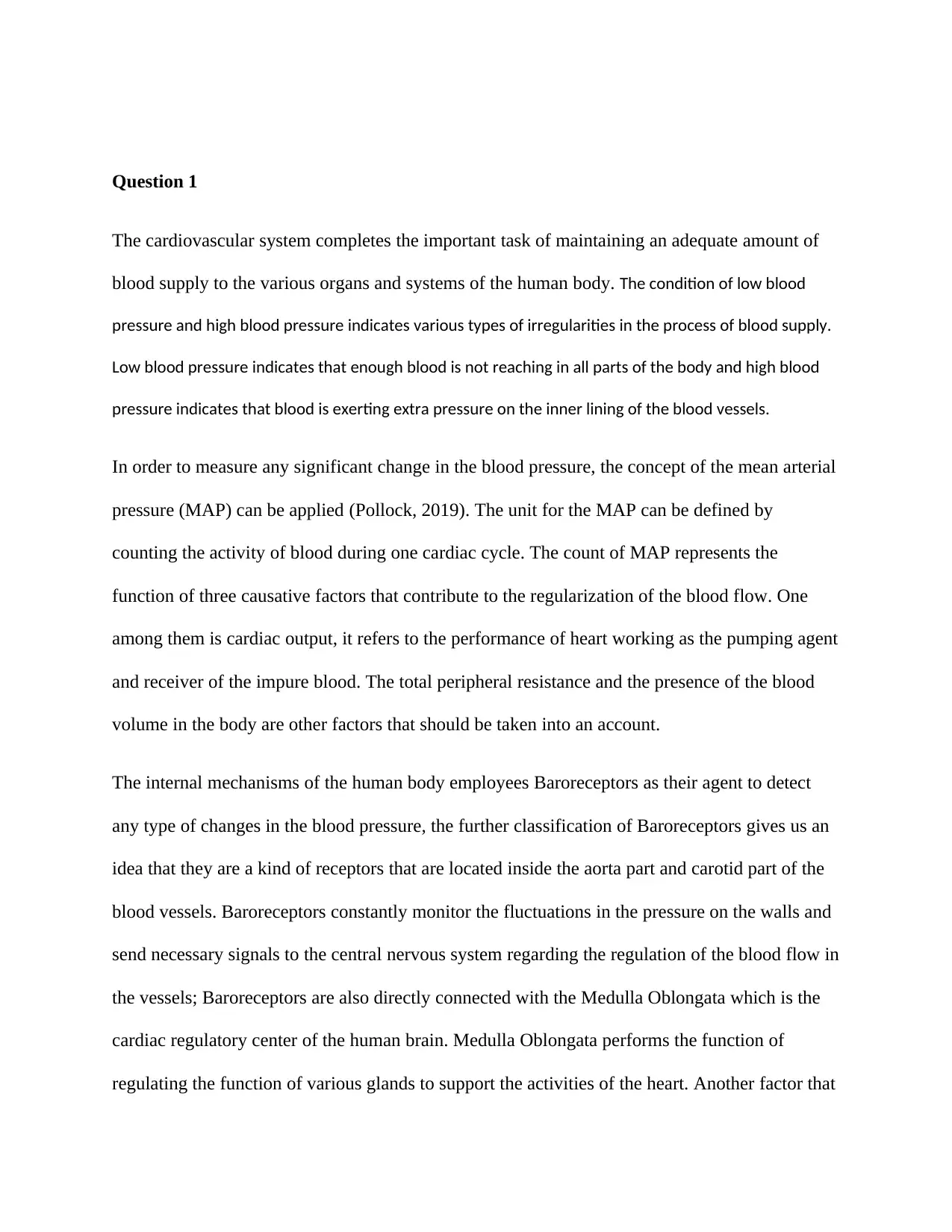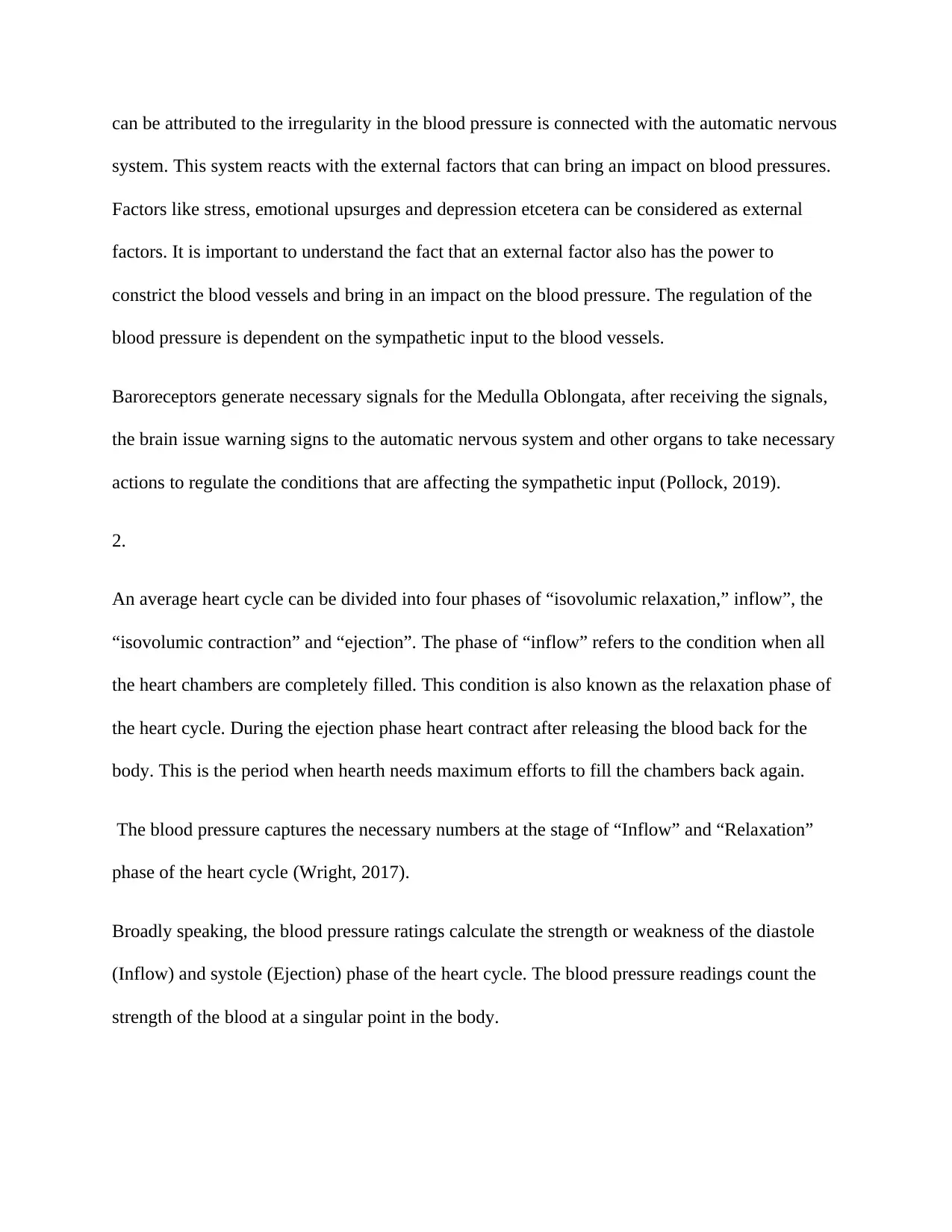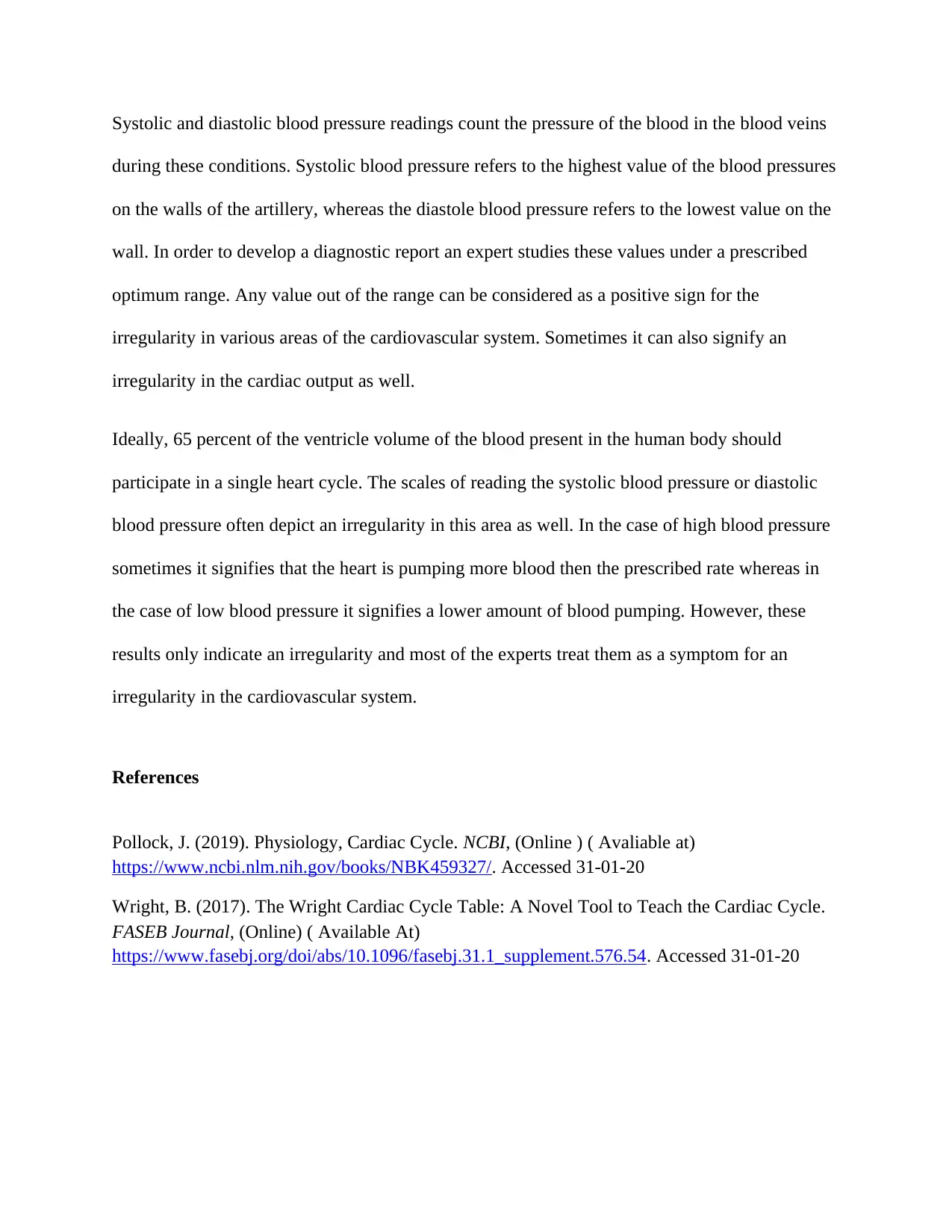Detailed Analysis of Blood Pressure, Cardiac Cycle and the Human Body
VerifiedAdded on 2022/08/18
|4
|938
|15
Homework Assignment
AI Summary
This assignment delves into the human cardiovascular system, focusing on blood pressure regulation and the cardiac cycle. It explores the significance of maintaining an adequate blood supply to the body's organs and systems, highlighting the implications of both low and high blood pressure. The concept of Mean Arterial Pressure (MAP) is introduced as a crucial tool for measuring changes in blood pressure, with cardiac output, total peripheral resistance, and blood volume identified as key factors influencing MAP. The role of baroreceptors in detecting and signaling blood pressure fluctuations to the central nervous system, particularly the Medulla Oblongata, is discussed, along with the impact of the autonomic nervous system and external factors like stress. The assignment also examines the four phases of the cardiac cycle and the relationship between blood pressure readings (systolic and diastolic) and the heart's function. It emphasizes how these readings reflect the efficiency of the heart's pumping action and can indicate irregularities in the cardiovascular system, including potential issues with cardiac output. The assignment references Pollock (2019) and Wright (2017) to support the analysis.
1 out of 4











![[object Object]](/_next/static/media/star-bottom.7253800d.svg)